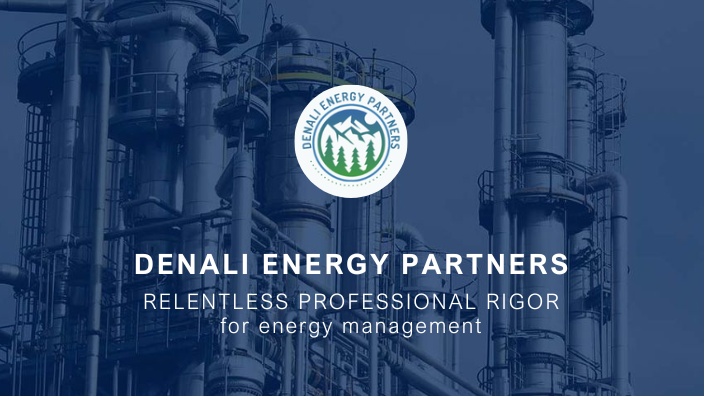What is the Ideal Carbon Footprint in Industrial Parks
Denali-ep
| 22 de octubre de 2024
What is the Ideal Carbon Footprint in Industrial Parks
The carbon footprint has become a central topic in discussions about sustainability and climate change. In industrial parks, where diverse productive activities are concentrated, understanding and managing the carbon footprint is essential not only for the environment but also for improving efficiency and reducing costs. This article will explore what a carbon footprint is, its importance in industrial parks, how it is measured, and the most effective strategies for reducing it.
Understanding the Carbon Footprint in Industrial Parks
What is a Carbon Footprint?
A carbon footprint is the total amount of greenhouse gases (GHGs) emitted directly or indirectly by an individual, organization, event, or product. These gases include carbon dioxide (CO₂), methane (CH₄), and nitrogen oxides (NOx), among others.
Concept and Measurement of Carbon Footprint
The concept of a carbon footprint allows for quantifying the environmental impact of different activities in terms of GHG emissions. Its measurement is typically done in tons of CO₂ equivalent (tCO₂e), a standard that facilitates comparison across different types of emissions.
Factors Influencing the Carbon Footprint in Industries
In industrial parks, several factors contribute to the carbon footprint, such as energy consumption, the type of fuel used, process efficiency, and waste management. Each of these elements can be optimized to reduce environmental impact.
Importance of Reducing the Carbon Footprint
Environmental Impact of a High Carbon Footprint
A high carbon footprint contributes to climate change and environmental degradation. GHG emissions lead to rising global temperatures, affecting ecosystems and biodiversity.
Economic Benefits of Reducing the Footprint in Industrial Parks
From an economic perspective, reducing the carbon footprint can result in significant savings in energy costs and improvements in competitiveness. Additionally, complying with environmental regulations can help avoid fines and penalties, benefiting companies as well.
How to Measure the Carbon Footprint in an Industrial Park
Measurement Methods
Various methods exist for measuring the carbon footprint in an industrial park, with Life Cycle Assessment (LCA) being one of the most comprehensive.
Life Cycle Assessment (LCA)
LCA analyzes the environmental impact of a product or process from raw material extraction to final disposal. This includes evaluating all intermediate stages, such as production, transportation, and use.
Tools and Technologies for Measuring the Carbon Footprint
Today, various tools and technologies are available to measure the carbon footprint, ranging from specialized software to sensors that monitor emissions in real-time.
Key Indicators
To effectively manage the carbon footprint, it is crucial to identify and monitor key indicators.
Direct and Indirect Emissions
Direct emissions come from sources controlled by the company, such as fuel combustion in boilers. Indirect emissions, on the other hand, are associated with electricity consumption and other inputs.
Energy Use and Energy Efficiency
Energy consumption is one of the main indicators to consider, as it is directly related to CO₂ emissions. Implementing energy efficiency improvements is a key strategy for reducing the carbon footprint.

Strategies to Reduce the Carbon Footprint
Optimization of Energy Use
One of the most effective ways to reduce the carbon footprint is to optimize energy use in industrial processes.
Implementation of Renewable Energy Sources
Incorporating renewable energy sources, such as solar or wind, can significantly reduce GHG emissions.
Energy Efficiency in Industrial Processes
Improving energy efficiency in production processes not only reduces emissions but can also result in significant savings in operating costs.
Waste Management
Proper waste management is another important strategy to minimize the carbon footprint.
Recycling and Reuse in Industrial Processes
Promoting recycling and reuse of materials within the industrial park can reduce the need for new raw materials, thereby decreasing associated emissions.
Reduction of Hazardous Waste
Minimizing the generation of hazardous waste and ensuring its proper disposal is crucial for minimizing environmental impact and carbon footprint.
Sustainable Transportation and Logistics
The transportation of goods and logistics also plays an important role in the carbon footprint.
Reducing Emissions in Goods Transport
Implementing more efficient vehicles and adopting alternative fuels can reduce GHG emissions in transportation.
Optimizing Routes and Loads
Optimizing transport routes and maximizing the payload of vehicles helps reduce emissions per unit of product transported.
Success Stories in Carbon Footprint Reduction
Examples of Sustainable Industrial Parks
Several industrial parks in Europe and Asia have successfully implemented strategies to reduce their carbon footprint, serving as models for others.
Industrial Parks in Europe and Asia
Countries like Germany and Japan have led the adoption of sustainable practices in their industrial parks, achieving significant reductions in their carbon emissions.
Lessons Learned and Successful Practices
These success stories offer valuable lessons about best practices in carbon footprint management that can be replicated in other contexts.
Positive Impact on Local Communities
Reducing the carbon footprint not only benefits the environment but can also have a positive impact on local communities by improving quality of life and promoting sustainable development.
Conclusion
In summary, the ideal carbon footprint in an industrial park is one that minimizes environmental impact while maximizing efficiency and economic benefits. Achieving this goal requires a continuous commitment to sustainability, innovation, and social responsibility. As we move toward a greener future, it is essential for industrial parks to adopt practices that allow them to reduce their carbon footprint and contribute to the global fight against climate change.
What is a carbon footprint, and why is it important for industrial parks?
A carbon footprint measures the total greenhouse gas emissions produced directly or indirectly by an organization, product, or activity. For industrial parks, understanding their carbon footprint is crucial for identifying areas of improvement, enhancing sustainability, and reducing costs while complying with environmental regulations.
How is the carbon footprint of an industrial park measured?
The carbon footprint is typically measured in tons of CO₂ equivalent (tCO₂e). Various methods exist for measurement, including Life Cycle Assessment (LCA), which evaluates the environmental impact from raw material extraction to final disposal. Tools like specialized software and real-time emission monitoring sensors can also assist in quantifying emissions.
What strategies can industrial parks implement to reduce their carbon footprint?
Industrial parks can adopt several strategies, including:
Optimizing energy use and improving energy efficiency.
Implementing renewable energy sources, such as solar and wind.
Promoting recycling and reuse of materials.
Enhancing waste management practices.
Utilizing sustainable transportation methods.
What are the economic benefits of reducing the carbon footprint in industrial parks?
Reducing the carbon footprint can lead to significant cost savings through lower energy expenses and increased operational efficiency. Additionally, compliance with environmental regulations can help avoid fines and improve competitiveness in the market, attracting more investment.
How do successful industrial parks demonstrate effective carbon footprint reduction?
Successful industrial parks, such as those in Germany and Japan, implement best practices in sustainability, such as adopting advanced technologies, optimizing processes, and fostering collaboration among tenants. These parks often showcase measurable reductions in emissions and serve as models for others looking to enhance their sustainability efforts.




